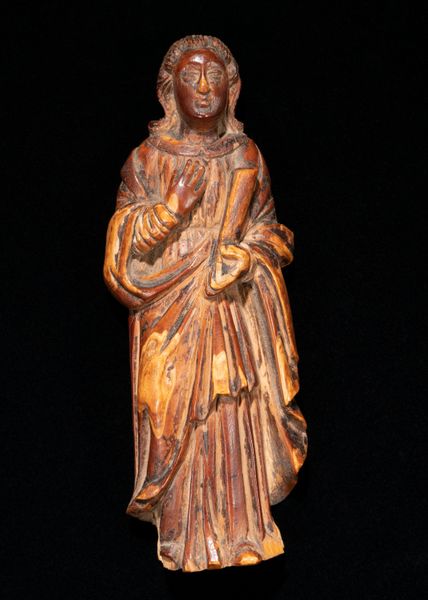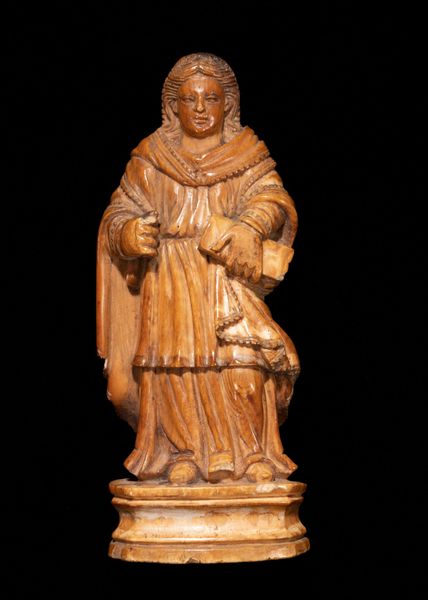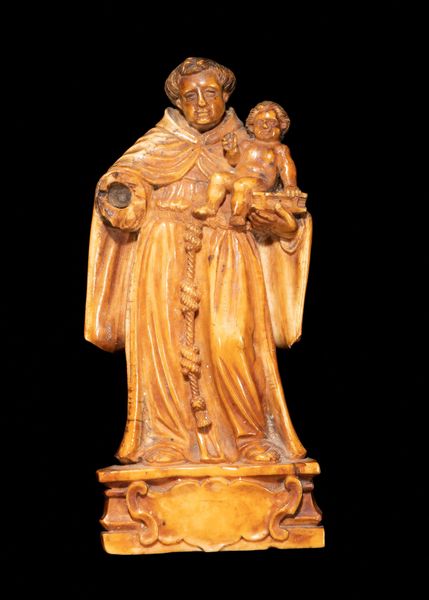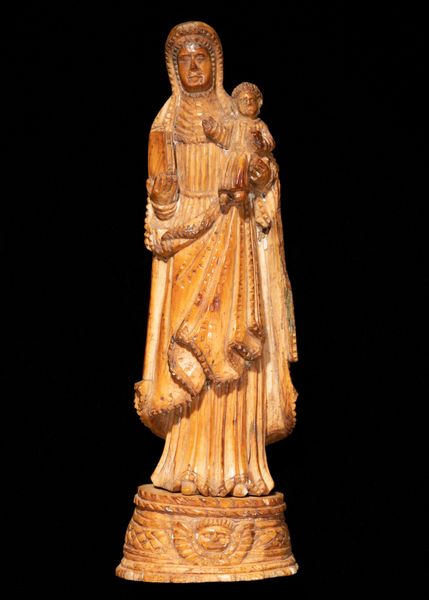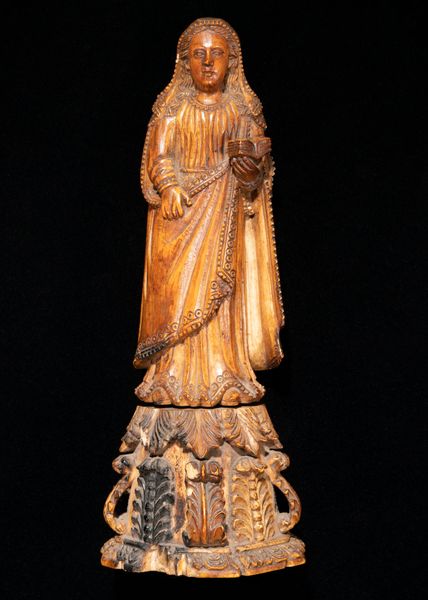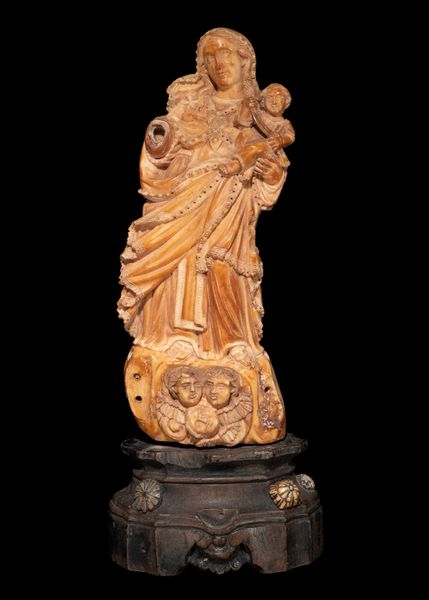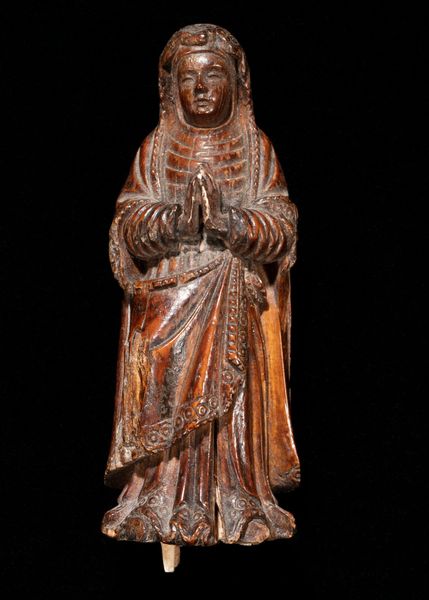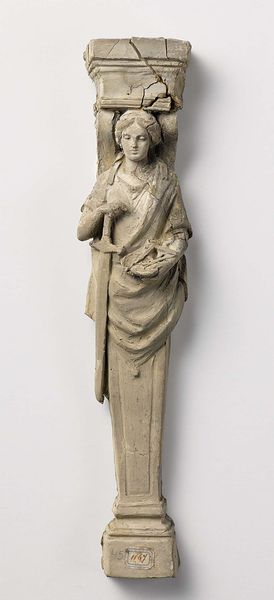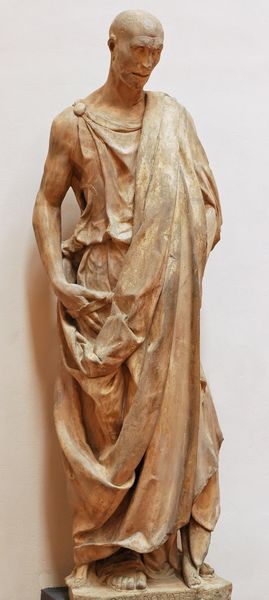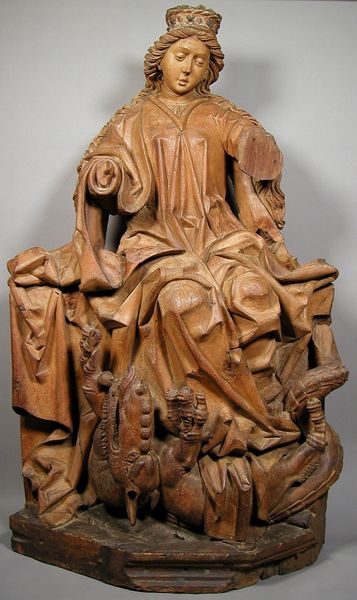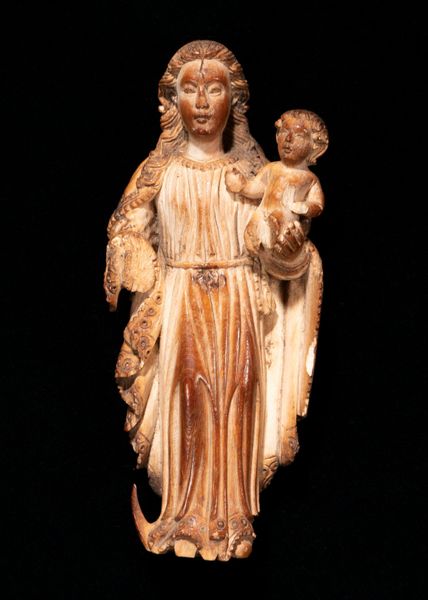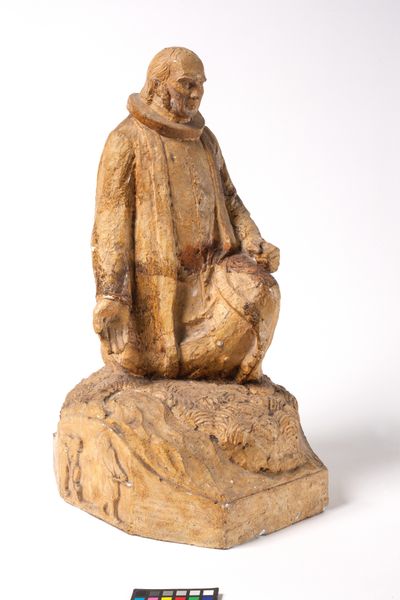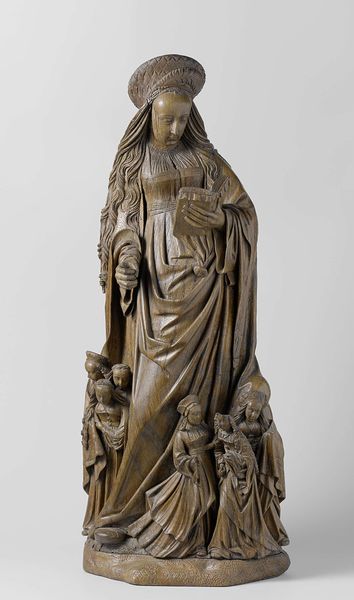
sculpture, ivory
portrait
medieval
sculpture
figuration
sculpture
ivory
Dimensions: 4 1/8 × 2 1/2 × 1 in. (10.48 × 6.35 × 2.54 cm)
Copyright: Public Domain
Editor: This sculpture, "Madonna and Child," dates back to the 18th century. It's an ivory carving, and you can find it at the Minneapolis Institute of Art. The compact size makes it feel so intimate and precious. What compositional elements stand out to you most? Curator: Note how the artist uses the verticality of the ivory piece itself, pushing the composition upwards. The cascading drapery of Madonna's robes creates dynamic lines that contrast beautifully with the smooth, self-contained form of the Child. Do you see how this play with line and form guides our eye? Editor: Yes, I see the way the folds in her clothing add a sense of movement and liveliness. It’s interesting how that detail makes something static appear more dynamic. Is the texture a factor in the symbolic reading? Curator: Indeed. The ivory itself, polished smooth, acts as a metaphor for purity, which is further augmented by the Virgin's calm facial expression. The medium becomes the message. And notice how the anonymous artist masterfully manipulates the material, giving form to not only a religious subject, but also, rendering tangible and tactile an ideological one. Editor: So the material isn't just a means, but adds layers of meaning in how we view the artwork. I never really thought of that. Curator: Exactly! It all points to how form, material, and composition are inseparable in generating a work's complete artistic expression. The surface speaks volumes, no?
Comments
The province of Goa in western India was under Portuguese control from 1512–1961, forming a nexus in trading routes that circumnavigated the earth. Goan craftsman were renowned for their supple modeling of ivory (likely exported from Mozambique) into Christian icons, which feed the appetite for luxury products in Europe, as well as furthered evangelical missions throughout Asia and the Americas. Within the genre of Indo-Portuguese ivories, popular subjects include ‘Christ as the Good Shepard’ (the image of Christ as child would have related to similar bronze statuettes of the God Krishna) and the ‘Virgin of the Immaculate Conception,’ which shows Mary atop a crescent moon, both of which remain ever-present icons in South Asia’s diverse religious landscape.
Join the conversation
Join millions of artists and users on Artera today and experience the ultimate creative platform.

